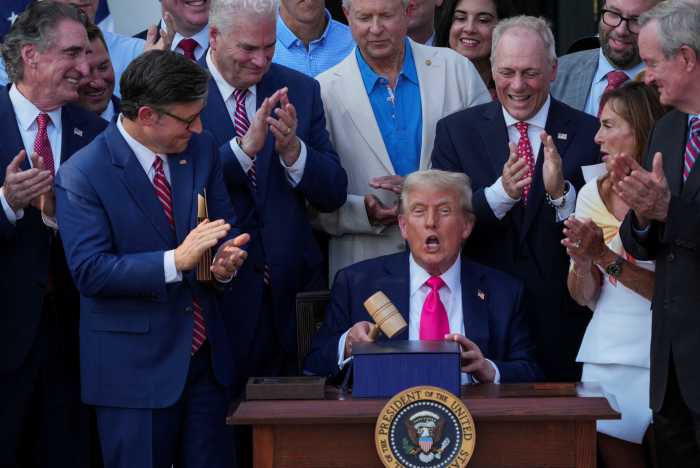Thanks to an extra $650 million in Liberty Bonds and about $150 million in tax breaks, it looks like Goldman Sachs is going to stay and build in Lower Manhattan — its home for more than a century.
An extra $800 million to go along with the previously $1 billion in tax-free Liberty Bonds once pegged to the plan is quite a high price to pay for a firm that took in $4.55 billion in net earnings last year.
Does this feel like corporate welfare? Shouldn’t government be creating good business conditions for everyone rather than cutting massive sweetheart deals for a few? Is it true that Goldman was unlikely to leave the city without the deal?
The answer to these questions is yes. Although we may want to hold our nose, this is good news for Lower Manhattan. Goldman’s apparent decision to build a headquarters catty-corner to the World Trade Center site at Battery Park City’s Site 26 comes at a pivotal moment when the future of Lower Manhattan as a center of global commerce is on the line.
If the deal died it would have been a devastating blow for Downtown. The idea that it’s nearly impossible to attract firms to offices near or at the W.T.C. would have gained more momentum. Even with Assembly Speaker Sheldon Silver’s “Marshall Plan” of Downtown incentives, developer Larry Silverstein is still having trouble signing tenants at 7 W.T.C.
Goldman’s decision is a vote of confidence in the future of Lower Manhattan and will hopefully influence others to relocate and remain Downtown. Roughly 9,000 high-paid Goldman workers in Battery Park City will help attract new stores and restaurants, benefit small businesses and strengthen the residential market throughout Lower Manhattan. Jobs of all income levels will be created.
There are, however, real concerns about the deal. The first step for approving the Liberty Bonds was passed this week at a meeting that even Good Jobs New York, the principal Liberty Bond watchdog group, did not know about. This is a project that has received support from Community Board 1 in addition to the business community so the secrecy from Gov. Pataki and his Empire State Development Corp. naturally raises suspicions.
Goldman was willing to provide $4.5 million for a neighborhood library and recreation center before the pot was re-sweetened for them. The deal should not be finalized until the firm agrees to a large increase in neighborhood investments. Board 1 and other community groups should take the lead in determining the best way to spend this additional neighborhood money.
Commercial Liberty Bonds passed by Congress three years ago were designed to go to private developers building new office space primarily Downtown. We have criticized parts of the program, but it is an exercise in futility to talk about spending these bonds on affordable housing, schools or some other worthy purpose that is forbidden by law. If not Goldman, the additional amount of bonds were likely to go to Silverstein, who still stands to be the largest recipient of the bonds. It makes sense to use the bonds now for a project rather than wait who knows how many years before the last offices are built at the W.T.C.
We can’t continue to do these corporate retention deals, but this one comes at a critical moment for the future of Lower Manhattan and the rest of the city.
google_ad_client = “pub-6226499064891091”;
google_ad_width = 468;
google_ad_height = 60;
google_ad_format = “468x60_as”;
google_ad_channel =”0606561524″;
google_color_border = “336699”;
google_color_bg = “FFFFFF”;
google_color_link = “0000FF”;
google_color_url = “008000”;
google_color_text = “000000”;
//–>
src=”https://pagead2.googlesyndication.com/pagead/show_ads.js”>
WWW Downtown Express

































